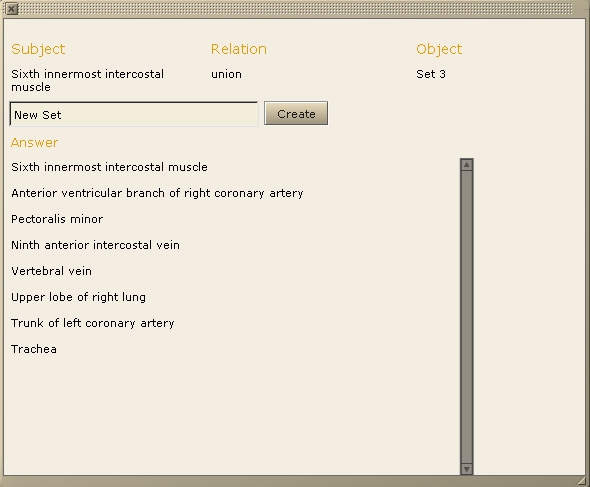The tool enables users to answer any complex question about spatial relations between anatomical structures and also about the FMA.
The idea is to divide a complex question into more simple subquestions so that each question has a subject, an object and a relation beween the subject and the object. The subject and the object must be either sets or single anatomical structures. For instance, in order to answer the question 'What is the spatial relation between the left seventh rib and the organs that are postero(16%) and right-lateral(29%) to the lower lobe of the left lung? ', the question needs to be divided into three questions.
The first question would be: what anatomical structures are
postero and right-lateral to the lower lobe of the left lung? That would give
us a first set (set 1).
Then, the second question would be: what anatomical structures are organs from Set 1? That would give us set 2.
Finally, the last question would be: what is the spatial relation
between the left seventh rib and set 2? That would give us the final
result.
To create new sets, just click on the structures on the left you want to add to your new set. In the right panel, you can see the structures added to the new set. If you want to remove a structure, just click on it in the list on the right. When you are finished with the selection, you can save the new set by clicking on the button 'Create this new set'.
This tab enables you to look at the existing sets you saved.
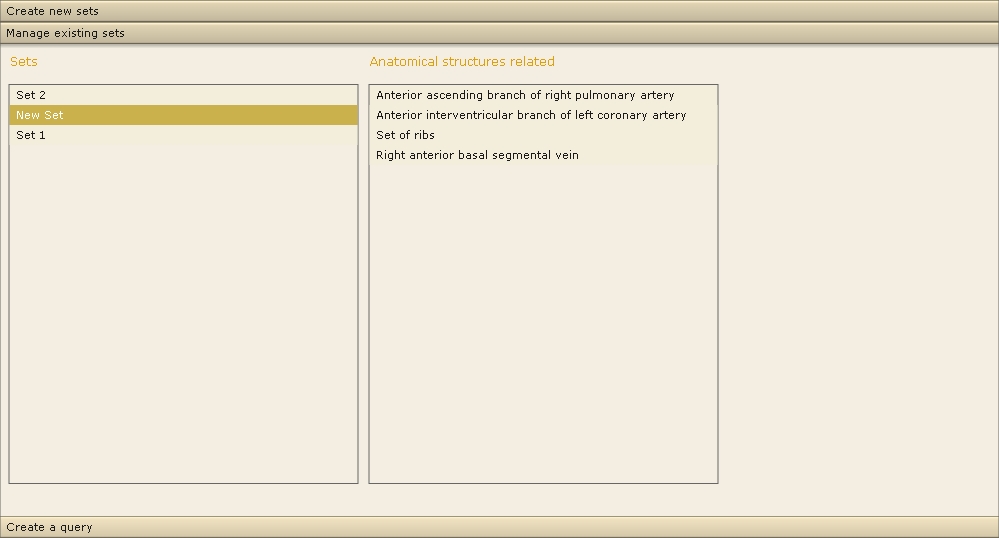
The tool enables you to answer any question like 'What is anterior to the lower lobe of the left lung?'. The spatial relations that the tool handles are anterior, posterior, right-lateral, left-lateral, inferior, superior, postero-left-lateral, postero-right-lateral, antero-right-lateral and antero-left-lateral. The spatial relation definitions are explained through a few pictures here. There is the possibility to combine at most two spatial relations (e.g. postero and right-lateral). For each spatial relation, the user can define a threshold value.
The subject is unknown since we try to figure out what structures are related (anterior, posterior, right-lateral, etc.) to the object.
Here is an example. What is postero(18%)-right-lateral(26%) to the lower lobe of the left lung? In the example, a single anatomical structure is taken into account but it could be a set.
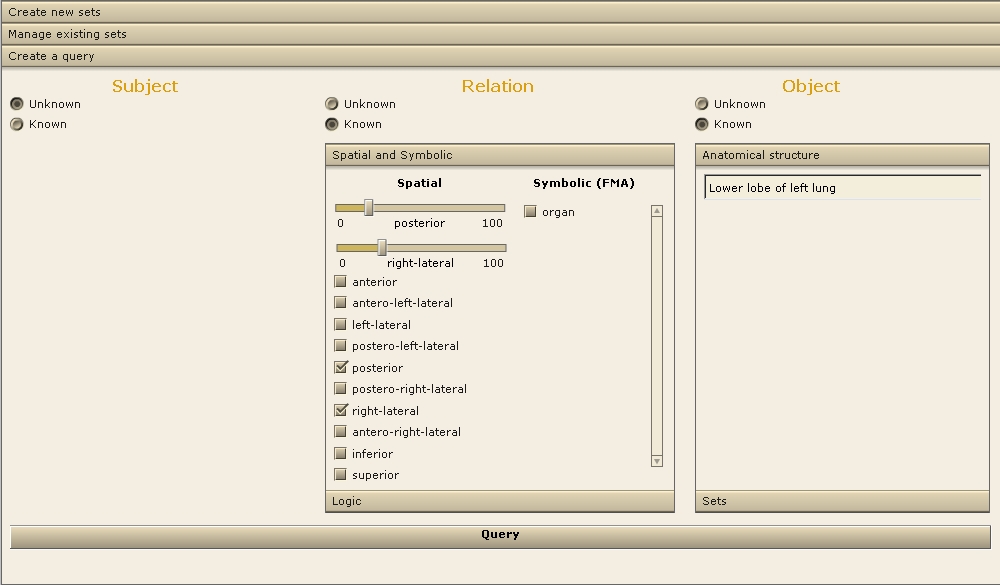
The result is a list of structures. You can save the set of structures if you may want to answer new questions involving this new set.
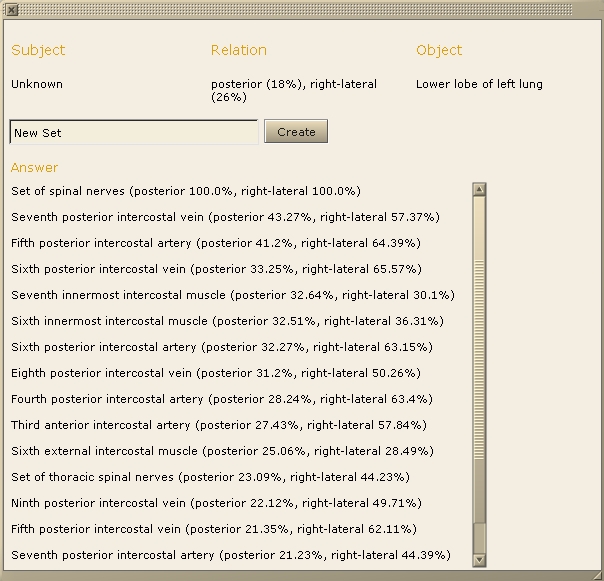
The tool enables you to find out which organs are anterior to a target structure. The method is similar as the method used to find out anterior structures. Just make sure to tick the box 'Organ'.
Here is an example. Which organs are postero(18%)-right-lateral(26%) to the lower lobe of the left lung? In the example, a single anatomical structure is taken into account but it could be a set.
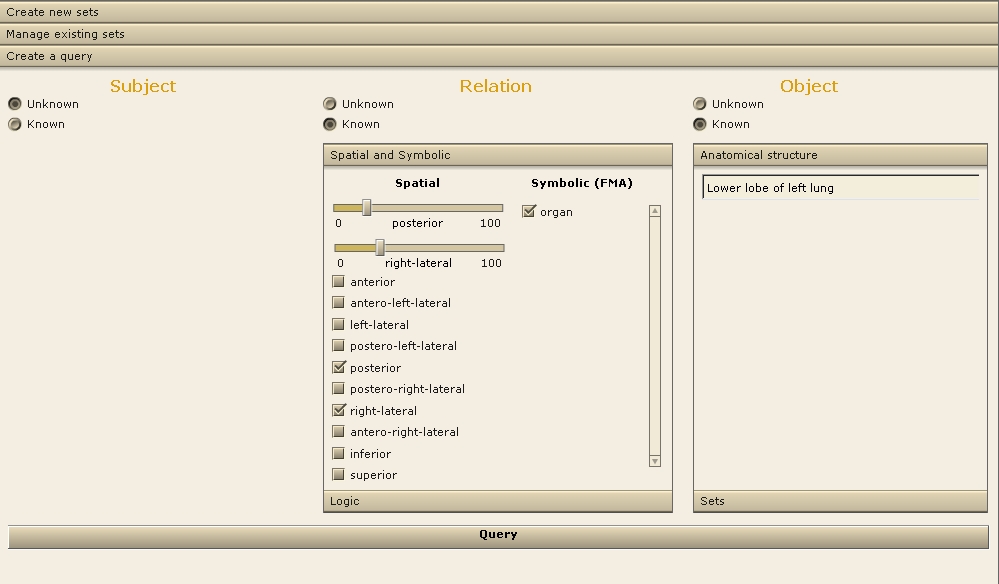
Here is the result as a list of structures:
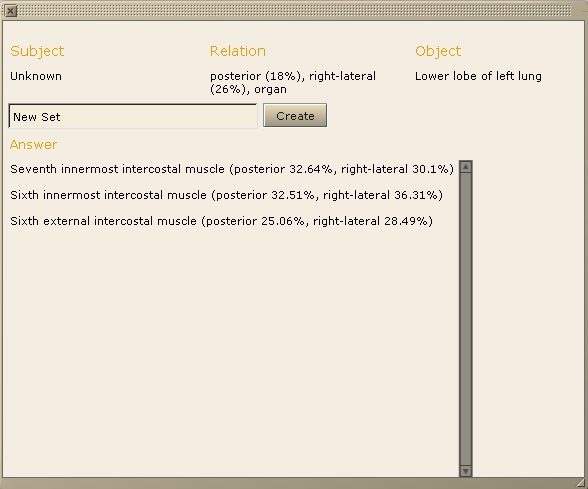
The tool enables you to answer any question like 'Is the sixth innermost intercostal muscle posterior to the lower lobe of the left lung (32%)?'. You need to enter the name of the subject and the object (it can be a set or a single anatomical structure).
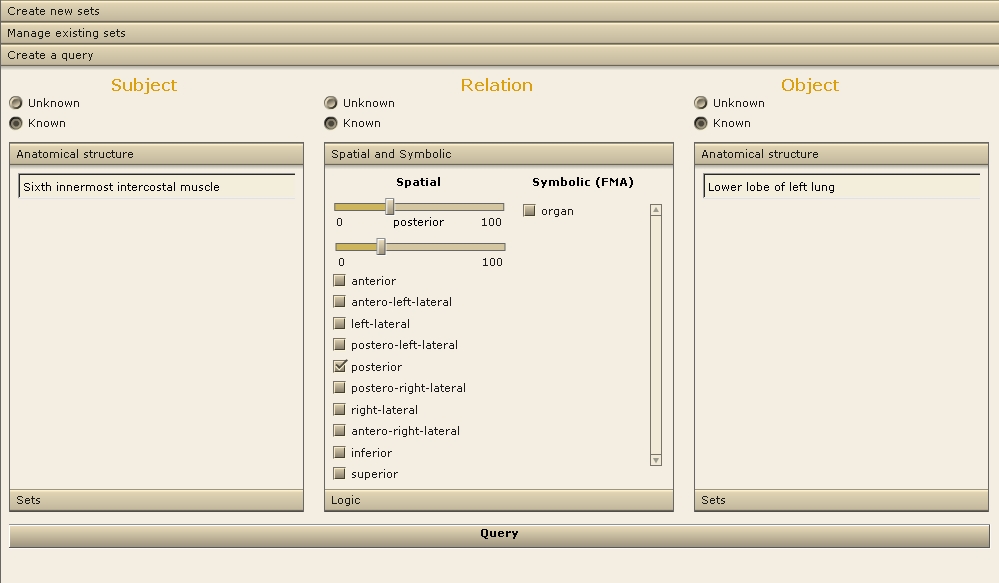
The result is a statement: true or false. In this case, it is true.
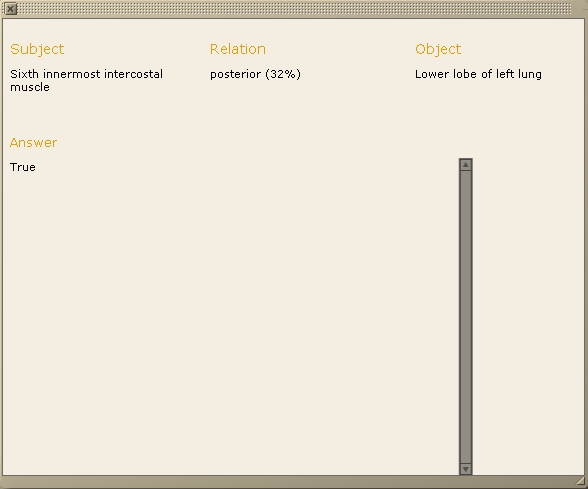
The tool enables you to answer any question like 'Is the sixth innermost intercostal muscle an organ posterior to the lower lobe of the left lung (32%)?'. You need to enter the name of the subject and the object (it can be a set or a single anatomical structure). Also, you need to to tick the box 'Organ'.
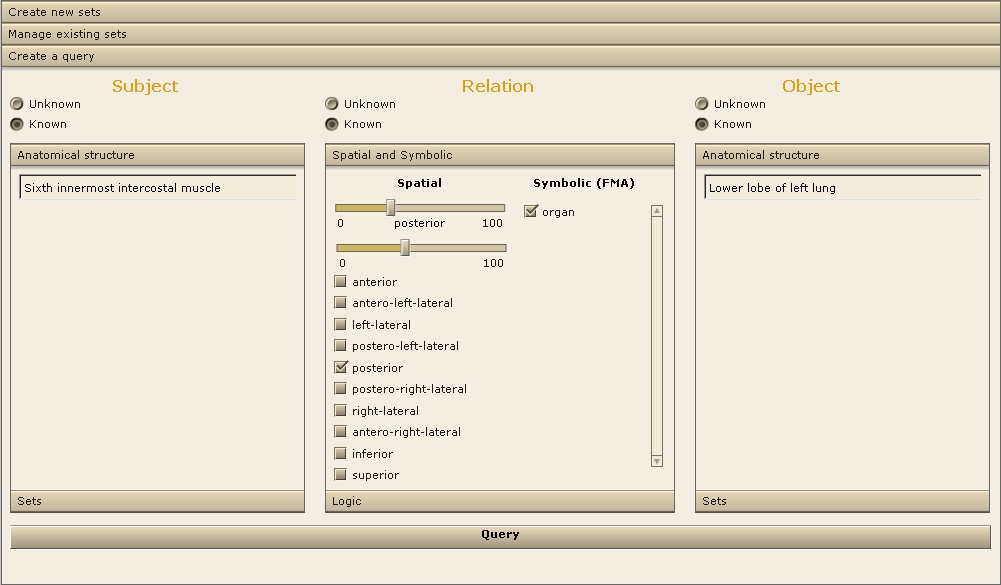
The result is a statement: true or false. In this case, it is true.
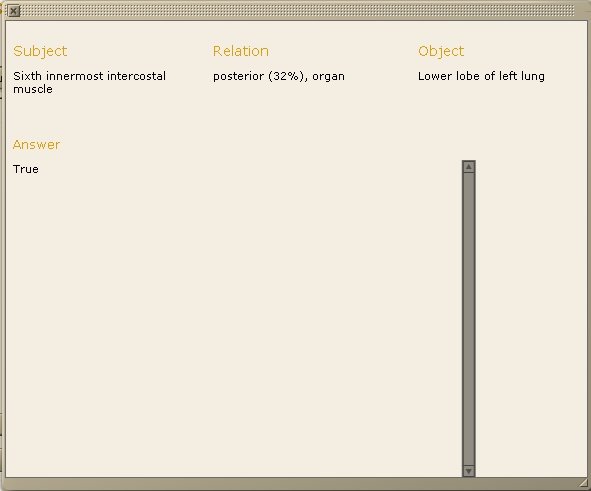
You have the possibility to determine the spatial relation(s) between two single antomical structures. You can also use sets and the tool will give the spatial relation for each anatomical structure of the set.
The subject and the object must be set up with sets or anatomical structures. Regarding the relation, the tab 'spatial' must be selected and no relation should be checked (otherwise, the result would be a statement true or false). The example underlines the spatial relation between the sixth innermost intercostal muscle and the lower lobe of the left lung.
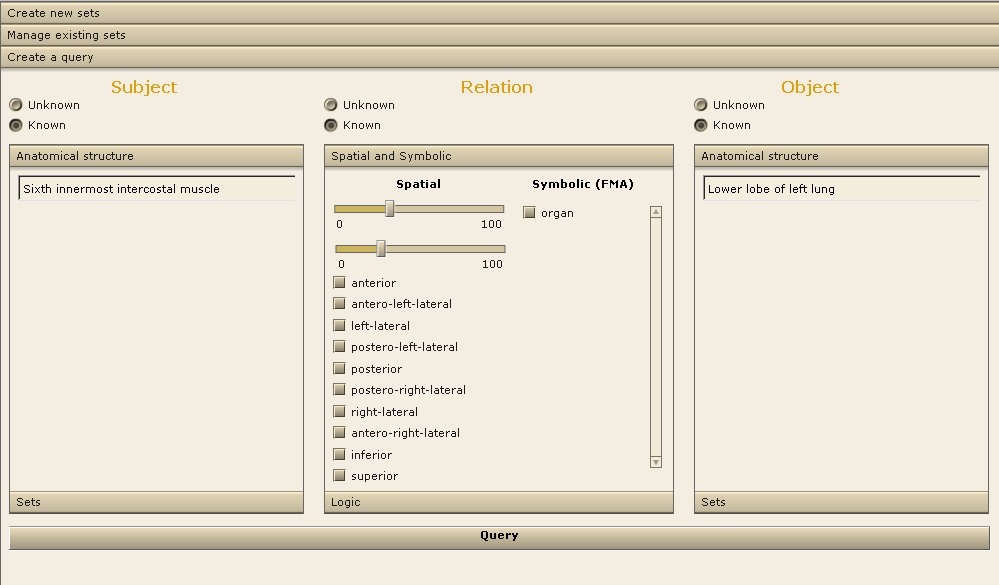
The result is a text with all the relations between the subject and the object.
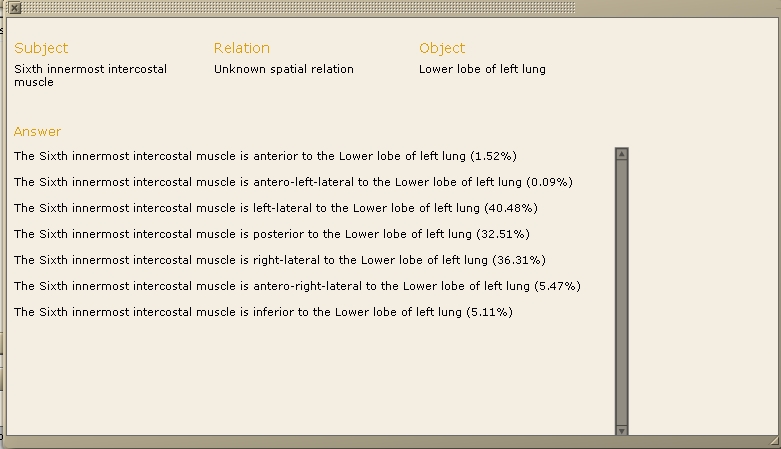
This feature is useful most of the time for intermediate results. It enables you to create unions and intersections of sets.
The subject and the object must be set up with sets or anatomical structures. Regarding the relation, the tab 'logic' must be selected and you can select either union or intersection.
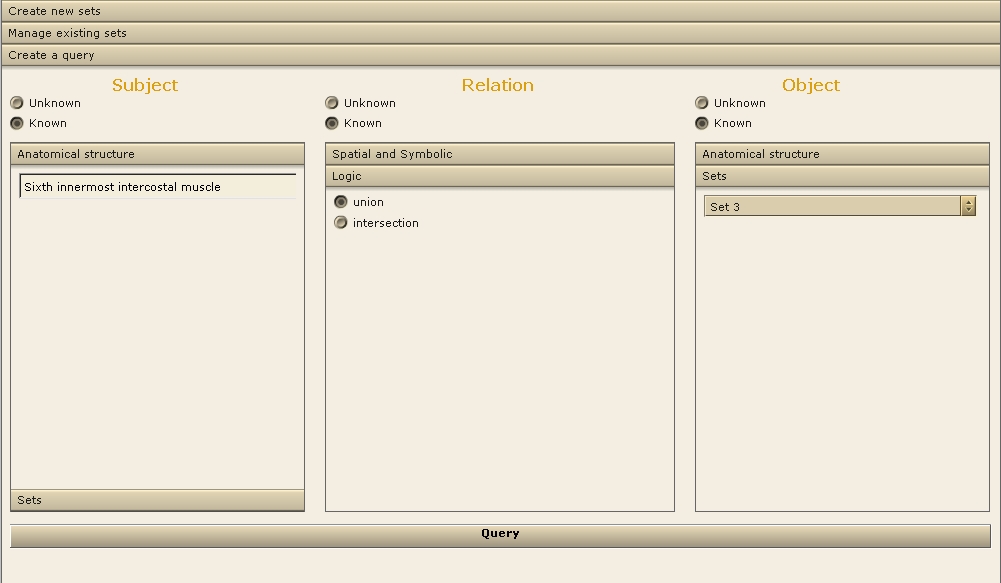
The result is a set (union or intersection of the object and the subject).
